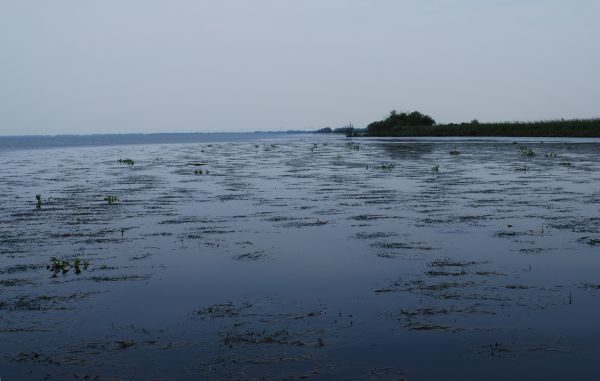
Cataouatche hydrilla loss no conspiracy
Three short years ago, a little lake snuggled into the crescent of the Mississippi River southwest of New Orleans rose to world prominence when Kevin VanDam boated 20 fish worth 69 pounds, 11 ounces to win the Bassmaster Classic by a stunning 10 pounds.
When VanDam spoke about how he put together his fourth Classic title, the legendary angler included a warning. “This is the best fishery in North America,” VanDam said. “To the state of Louisiana: Please take care of it.”
Fishing was just stunning at the time, with 10-pounders expected each spring as a result of thick vegetation combined with aggressive stocking of Florida bass.
Today, however, Cataouatche has lost its groove. The reason for the fall from glory is pretty obvious: The mats of hydrilla that once choked the lake and held those huge bass are gone.
Fishing this year was just awful, with almost no big bass being caught. It was a struggle to even catch smaller bass, in fact.
Predictably, that fall-off has upset folks, who are now demanding to know why the grass has disappeared.
Equally predictable has been the finger-pointing by anglers, many of whom swear state or federal agencies dumped chemicals in the lake to kill the grass. State biologists, meanwhile, have pointed to increased sediment deposits into the lake as a possible reason for the disappearance. Has that been proved? Not concretely, but it’s a better bet than chemical treatments, which would cost more money than the state can afford.
One local guide claims the problem is that the Davis Pond Freshwater Diversion, which built Lake Cataouatche’s famous fishery, is being underused and that increased salinities have killed the grass.
I’m not sure I buy higher salinity as the culprit: At press time, the salinity in Lake Salvador just south of Cataouatche was less than .5 parts per thousand — and no time during 2013 did salinities hit 2 ppt. And, according to the Smithsonian Marine Station, hydrilla growth “persists in a laboratory environment at 7 ppt when transitioned in one step from fresh water, and at up to 12 ppt when the transfer was gradual.”
Obviously, hydrilla can take some salinity and keep on ticking.
That doesn’t answer the $1 million question: Why has the vegetation disappeared?
The simple answer is probably one no one wants to hear: We might never know.
Nature is fickle, and sometimes things happen for inexplicable reasons. That doesn’t mean we should stop trying to determine causes for the turnaround.
But it also doesn’t mean there’s a conspiracy to ruin a fishery worth millions of dollars to the state.